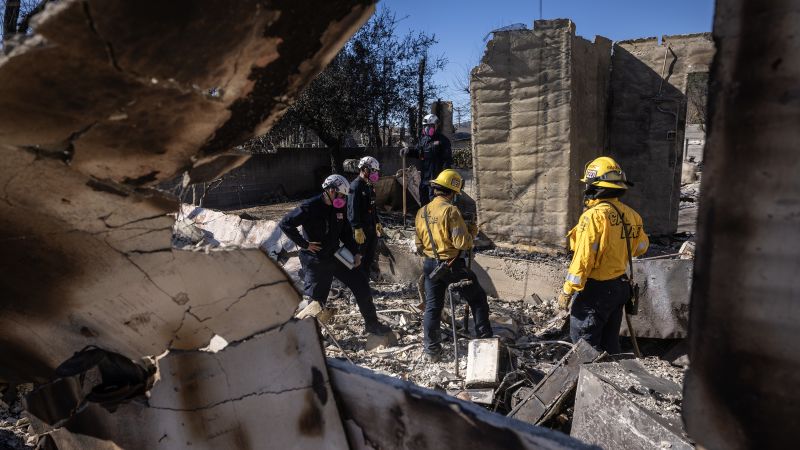In a notable development, the Federal Emergency Management Agency (FEMA) has allocated nearly $1 billion in funding aimed at enhancing disaster preparedness and homeland security across various communities nationwide. This announcement comes on the heels of a previous report by CNN, which exposed FEMA’s initial intentions to drastically reduce these funding programs under directives from the Department of Homeland Security (DHS), which supervises FEMA’s operations.
On a Friday, FEMA communicated to the states its new plan for distributing funding through multiple grant programs. According to documents obtained by CNN from one of the states, FEMA is actively accepting applications for over a dozen different grants, all intended to strengthen local communities’ disaster readiness capabilities. Just days prior to this unveiling, however, internal memos indicated that these grant programs were close to being defunded, a decision signed off by FEMA’s acting administrator David Richardson and DHS Secretary Kristi Noem.
The official notice regarding the grant funding underscores the agency’s commitment to expose and rectify waste and potential abuse within grant distributions, thus ensuring a balance of accountability for taxpayers. The notification explicitly states that the current administration will no longer tolerate the usage of federal funds for “luxury lodging for illegal immigrants,” neither will it support funding “pet projects related to climate change” or organizations associated with dubious activities that don’t align with the interests of the American populace.
While the announcement regarding the release of funds is significant, the DHS has characterized claims of a reversal in policy as unfounded. According to their statement, the decision to distribute the funds was based on a meticulous review process of grant programs, reinforcing states’ abilities to handle various disasters—be they fires, floods, or even large-scale cyber threats.
Interestingly, the reasoning behind FEMA’s contrasting positions—seeking to cut programs one week and then announcing funds the following—is still uncertain. Internal documents from FEMA had previously delineated the risks associated with eliminating these grant programs. Specifically, removing funding for community preparedness would heighten vulnerabilities to disasters, while ceasing funding aimed at bolstering transportation infrastructure and security in urban areas would contradict the administration’s stated goals of enhancing national safety.
The funding reversal has effectively safeguarded initiatives like the Urban Areas Security Initiative (UASI), which allocates over $500 million towards aiding major urban centers in their emergency preparedness efforts. FEMA’s own evaluations had warned that discontinuing this program could lead to a significantly less secure environment, particularly in high-risk metropolitan areas like Washington D.C., Miami, and Dallas.
According to the updated priorities outlined by Secretary Noem, this funding will focus on securing “soft targets”—locations with lower levels of inherent security—as well as crowded venues, encouraging the formation of Homeland Security Task Forces, and enhancing cybersecurity measures. Additionally, a portion of the funding will be allocated toward election security, an effort to ensure that poll workers are verified U.S. citizens, alongside strengthening border enforcement and response protocols.
FEMA aims to leverage these federal financial resources to enable states to take proactive measures in disaster preparation, response, and recovery efforts, thereby reinforcing both national security and resilience. The recently announced grants represent the bulk of funding that had been previously identified for potential cuts, enabling states to begin applying for necessary resources to improve their emergency management capabilities. Notably, FEMA must distribute these funds by the end of September, aligning with the conclusion of the fiscal year.
The ongoing challenges within FEMA reflect broader administrative changes instituted by the Trump administration, which seeks to minimize FEMA’s operational reach while transferring greater responsibility for disaster management to state and local entities. Recent months have seen a notable stall in FEMA’s process of approving new grant recipients due to a comprehensive review process mandated by the DHS.
This shift in policy has also drawn scrutiny from DHS representatives, who have noted their intent to eliminate “unaccountable programs” from federal expenditure, acknowledging that some grant programs were indeed vulnerable to potential reductions. In the wake of this funding revelation, a DHS spokesperson reiterated the administration’s commitment to terminating waste and fraud across federal programs, ensuring that taxpayer dollars do not continually support bloated grant allocations or unnecessary projects.
Amidst these shifting narratives, the agency has also attempted to clarify its position in light of reports from various media organizations, asserting that any claims suggesting a reversal in direction are based on conjectural interpretations of internal discussions rather than official alterations in policy. This statement, coupling with the unveiling of nearly $1 billion in disaster relief funding, paints a complex picture of FEMA’s role and responsibilities in domestic disaster management as the federal landscape continues to evolve.











